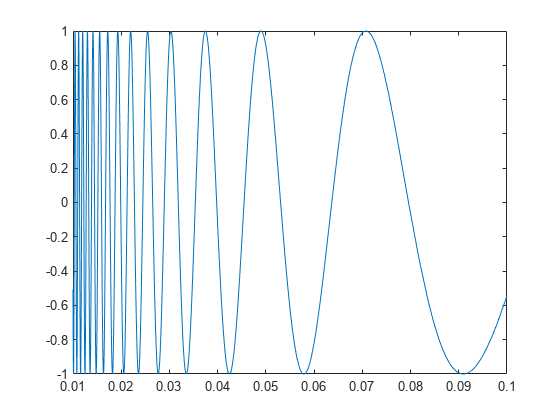Types of Functions
Local and Nested Functions in a File
Program files can contain multiple functions. Local and nested functions are useful for dividing programs into smaller tasks, making it easier to read and maintain your code.
Local functions are subroutines that are available within
the same file. Local functions are the most common way to break up programmatic
tasks. In a function file, which contains only function definitions, local functions
can appear in the file in any order after the main function in the file. In a script
file, local functions can be added anywhere except within conditional contexts, such
as if statements and for loops. For more
information, see Add Functions to Scripts.
Before R2024a: Local functions in scripts must be defined at the end of the file, after the last line of script code.
For example, create a function file named myfunction.m that
contains a main function, myfunction, and two local functions,
squareMe and doubleMe:
function b = myfunction(a) b = squareMe(a)+doubleMe(a); end function y = squareMe(x) y = x.^2; end function y = doubleMe(x) y = x.*2; end
You can call the main function from the command line or another program file,
although the local functions are only available to
myfunction:
myfunction(pi)
ans = 16.1528
Nested functions are completely contained within another function. The primary difference between nested functions and local functions is that nested functions can use variables defined in parent functions without explicitly passing those variables as arguments.
Nested functions are useful when subroutines share data, such as applications that pass data between components. For example, create a function that allows you to set a value between 0 and 1 using either a slider or an editable text box. If you use nested functions for the callbacks, the slider and text box can share the value and each other’s handles without explicitly passing them:
function myslider value = 0; f = figure; s = uicontrol(f,'Style','slider','Callback',@slider); e = uicontrol(f,'Style','edit','Callback',@edittext,... 'Position',[100,20,100,20]); function slider(obj,~) value = obj.Value; e.String = num2str(value); end function edittext(obj,~) value = str2double(obj.String); s.Value = value; end end
Private Functions in a Subfolder
Like local or nested functions, private functions are accessible only to functions
in a specific location. However, private functions are not in the same file as the
functions that can call them. Instead, they are in a subfolder named
private. Private functions are available only to functions in
the folder immediately above the private folder. Use private
functions to separate code into different files, or to share code between multiple,
related functions.
Anonymous Functions Without a File
Anonymous functions allow you to define a function without creating a program file, as long as the function consists of a single statement. A common application of anonymous functions is to define a mathematical expression, and then evaluate that expression over a range of values using a MATLAB® function function, i.e., a function that accepts a function handle as an input.
For example, this statement creates a function handle named s for an anonymous function:
s = @(x) sin(1./x);
This function has a single input, x. The @ operator creates the function handle.
You can use the function handle to evaluate the function for particular values, such as
y = s(pi)
y = 0.3130
Or, you can pass the function handle to a function that evaluates over a range of values, such as fplot:
range = [0.01,0.1]; fplot(s,range)
